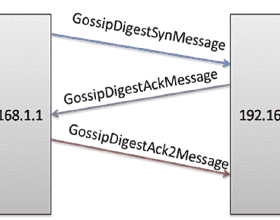A source node updates its status as a point process and also forwards its updates to a network of observer nodes. Within the network of observers, these updates are forwarded as point processes from node to node. Each node wishes its knowledge of the source to be as timely as possible. In this network, timeliness is measured by a discrete form of age of information: each status change at the source is referred to as a version and the age at a node is how many versions out of date is its most recent update from the source. This work introduces a method for evaluating the average version age at each node in the network when nodes forward updates using a memoryless gossip protocol. This method is then demonstrated by version age analysis for a collection of simple networks. For gossip on a complete graph with symmetric updating rates, it is shown that each node has average age that grows as the logarithm of the network size.
翻译:源节点更新其作为点进程的地位, 并将其更新转发到观察点节点网络。 在观察者网络中, 这些更新作为点进程从节点到节点转发。 每个节点希望对源点的了解尽可能及时。 在此网络中, 及时性用信息的不同年龄来测量: 源点的每个状态变化都被称为一个版本, 节点的时代是来自源头的最新更新有多少版本。 这项工作引入了一种方法, 用于评估网络中每个节点在使用无记忆八卦协议进行节点更新时的平均版本年龄 。 此方法随后通过简单网络集的版本年龄分析来演示。 对于带有对称更新率的完整图表上的八卦, 显示每个节点的平均年龄随着网络大小的对数而增长。





